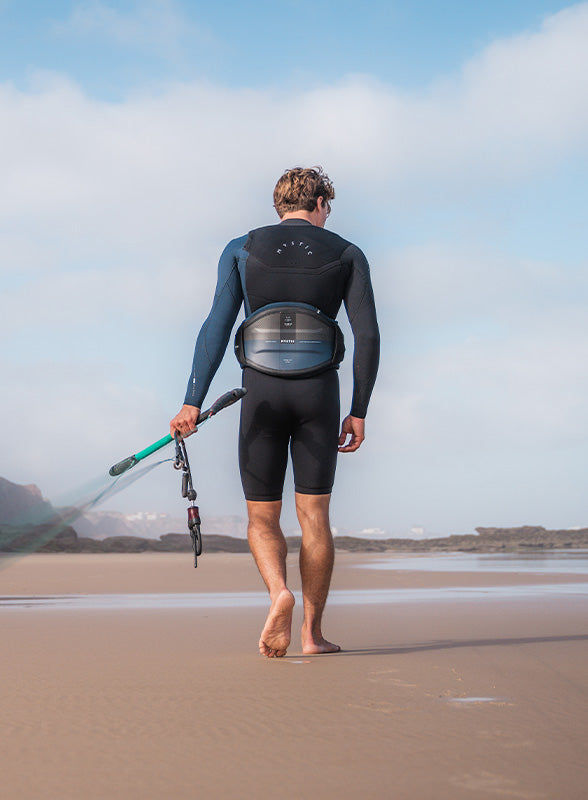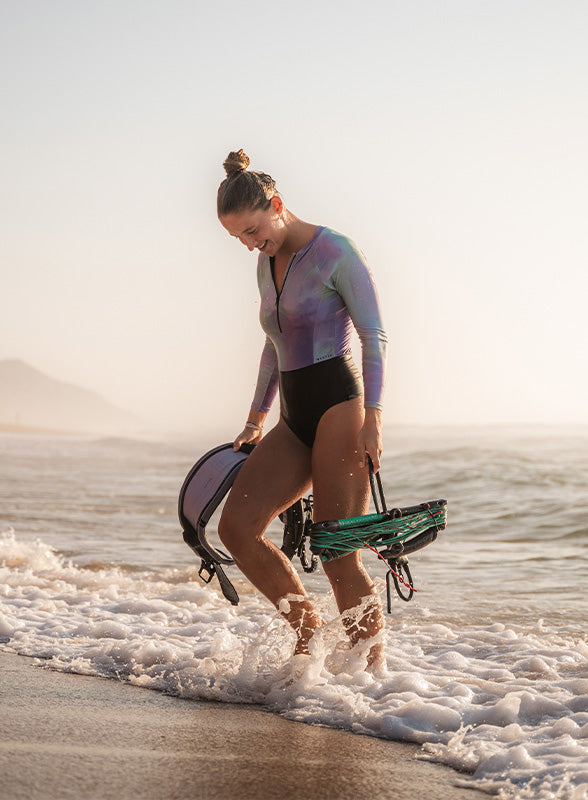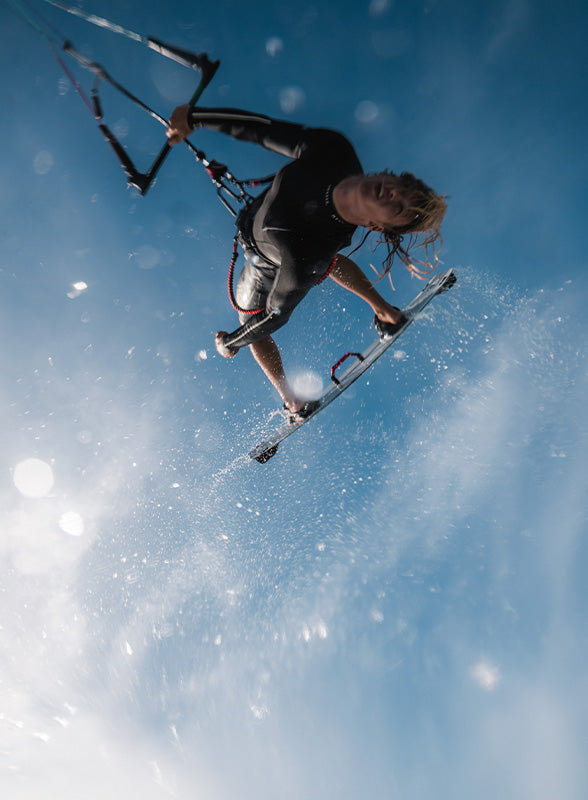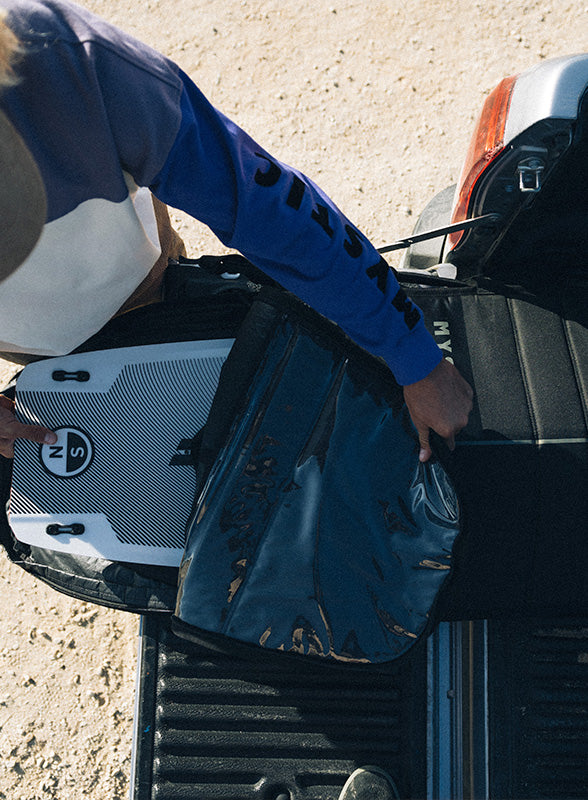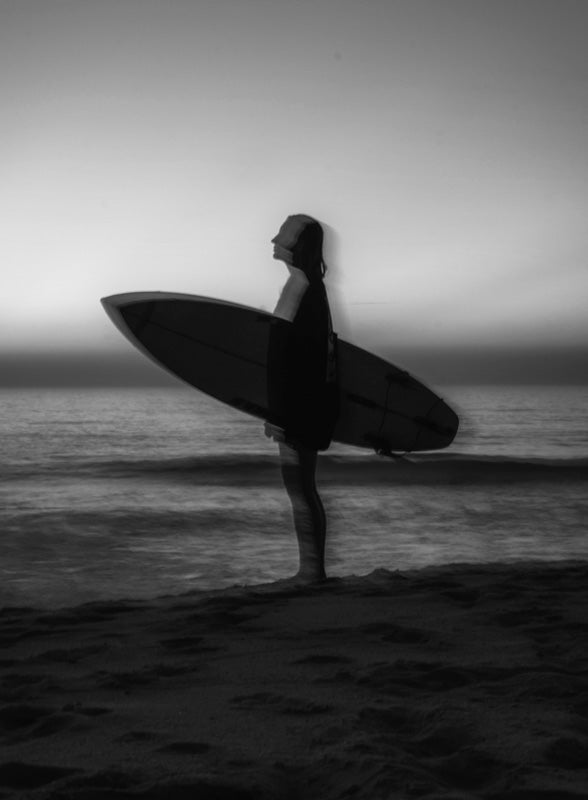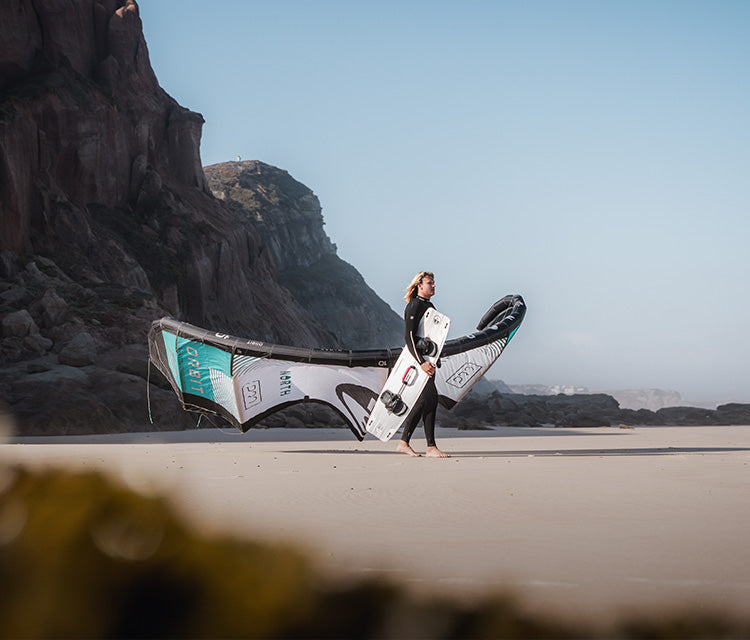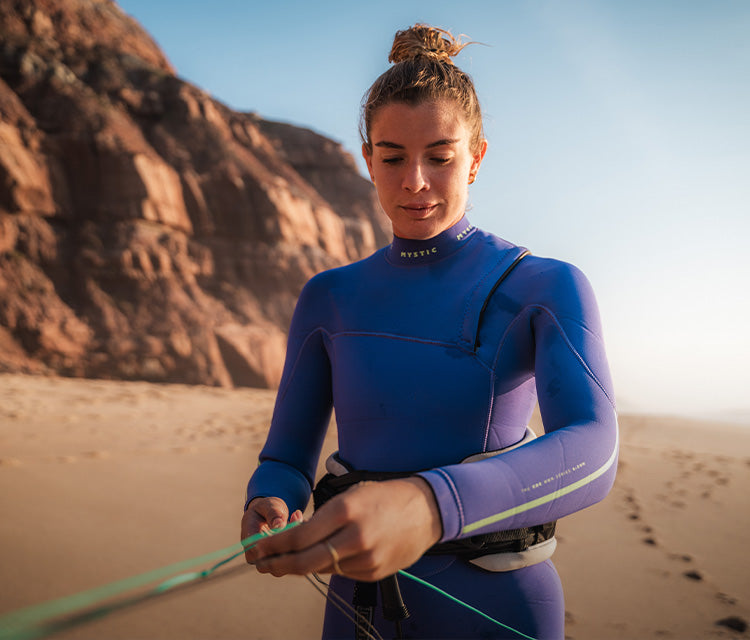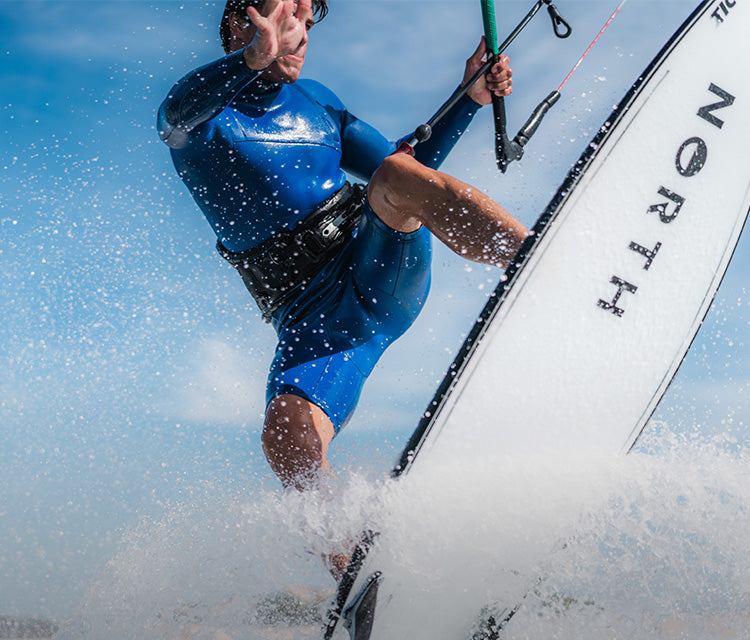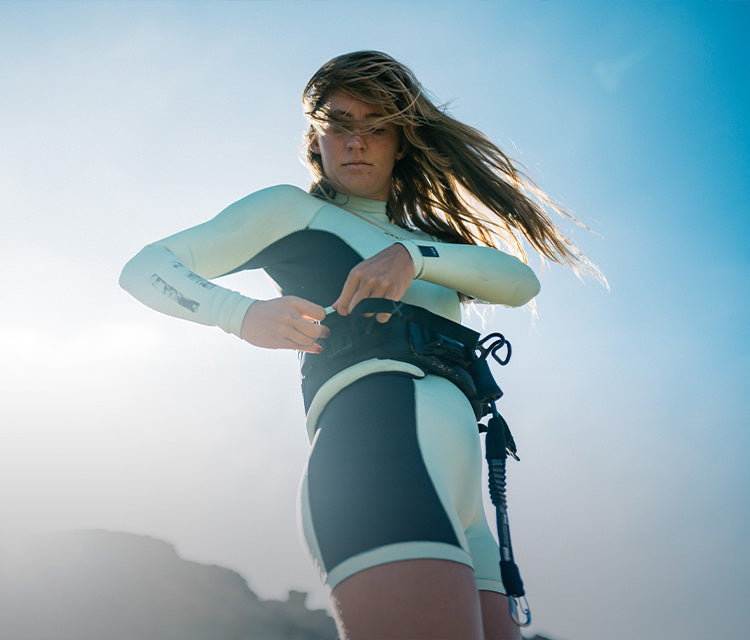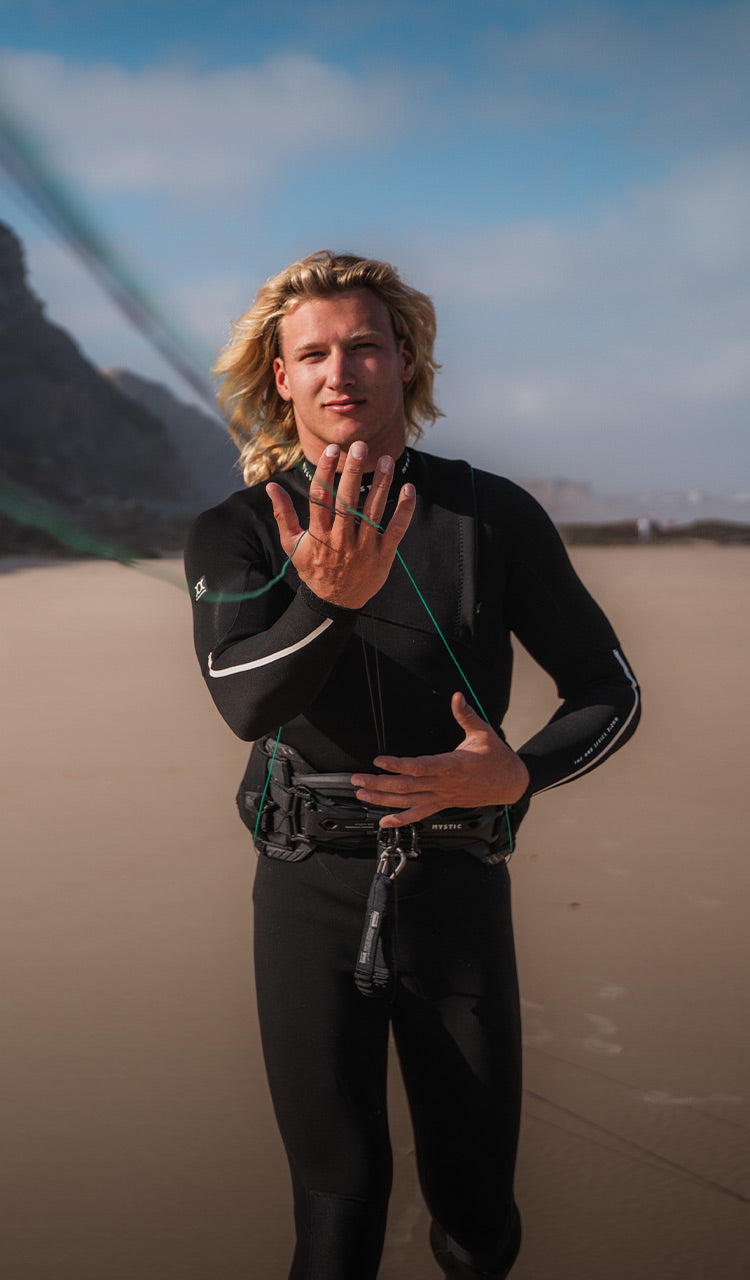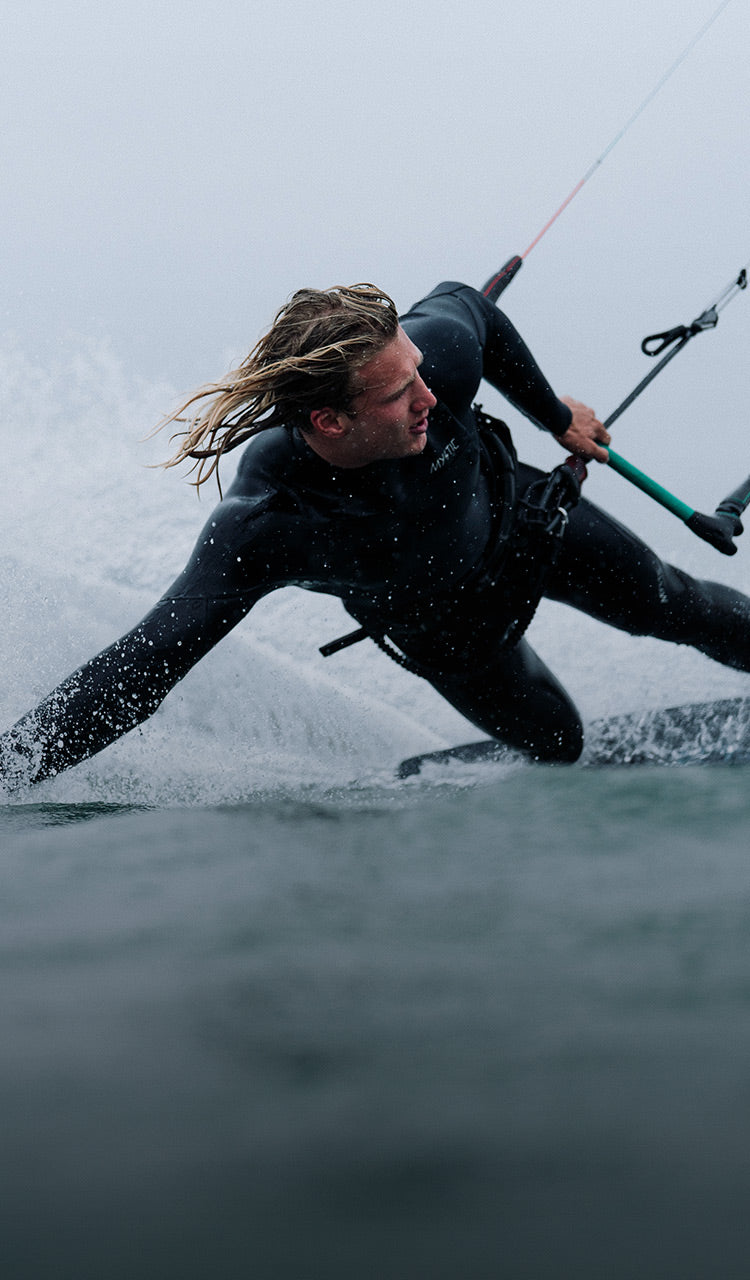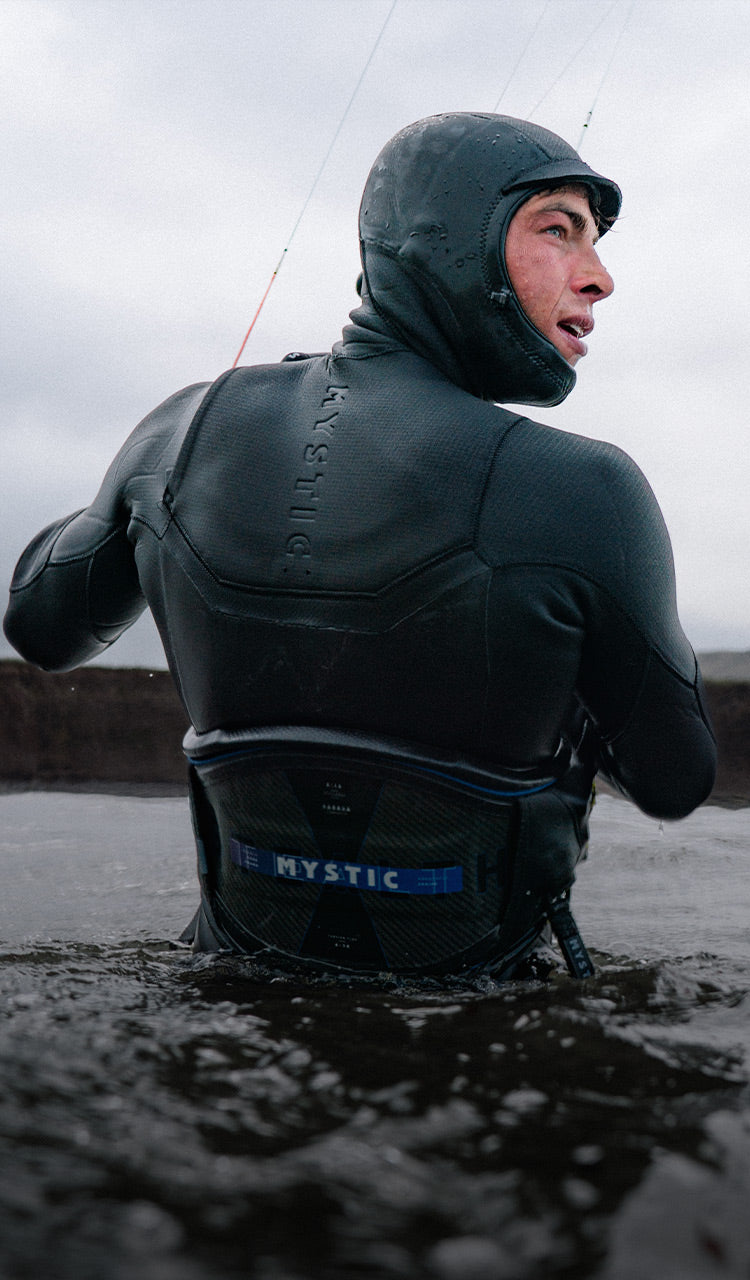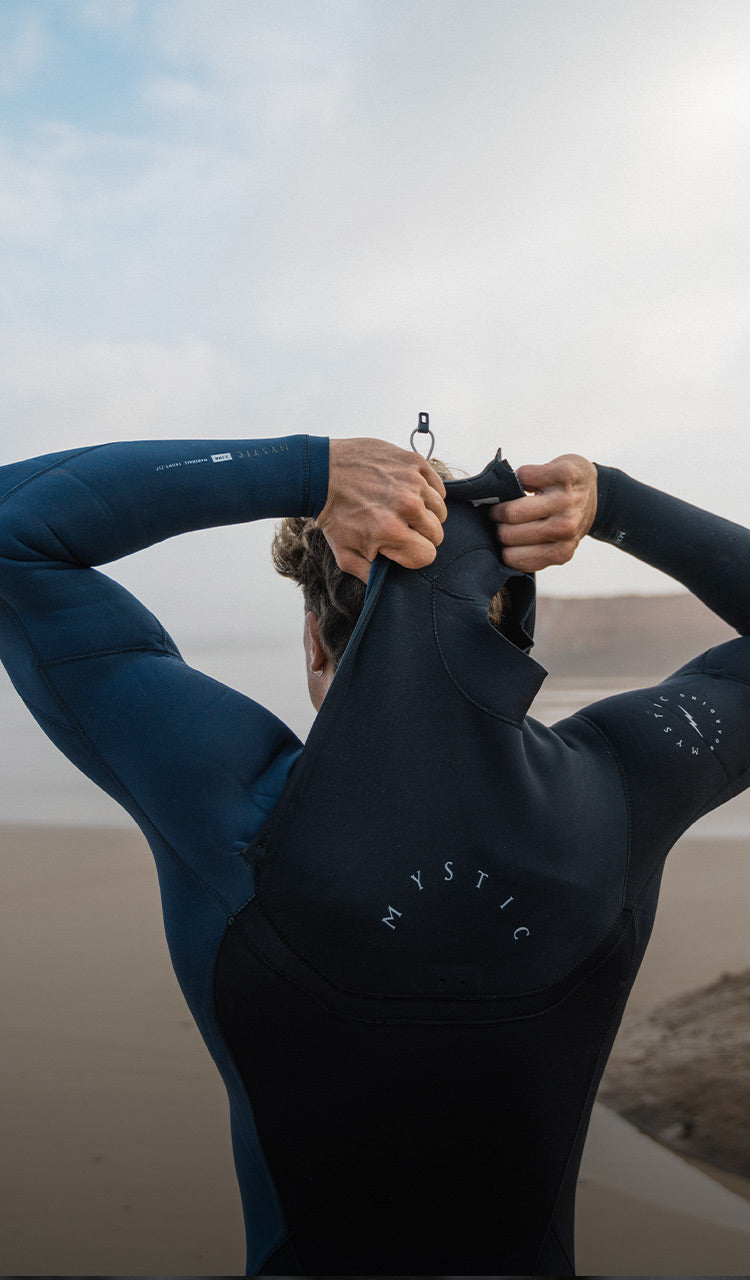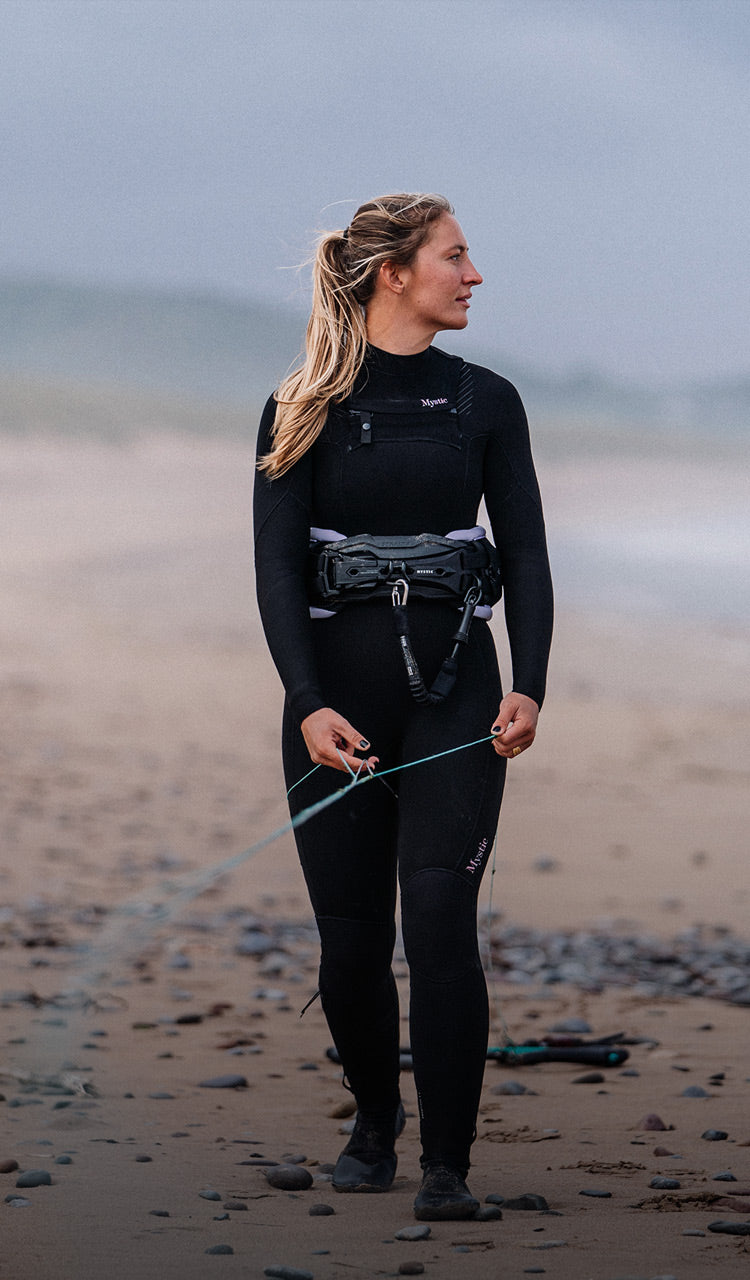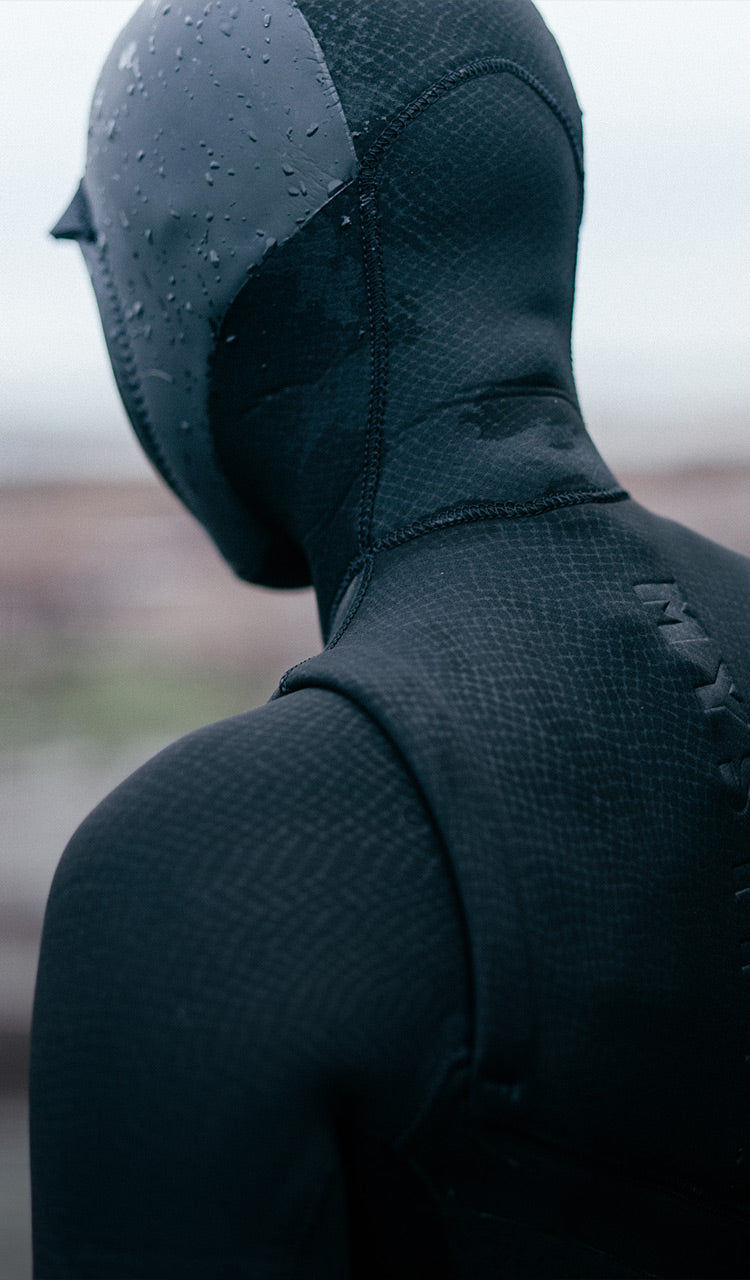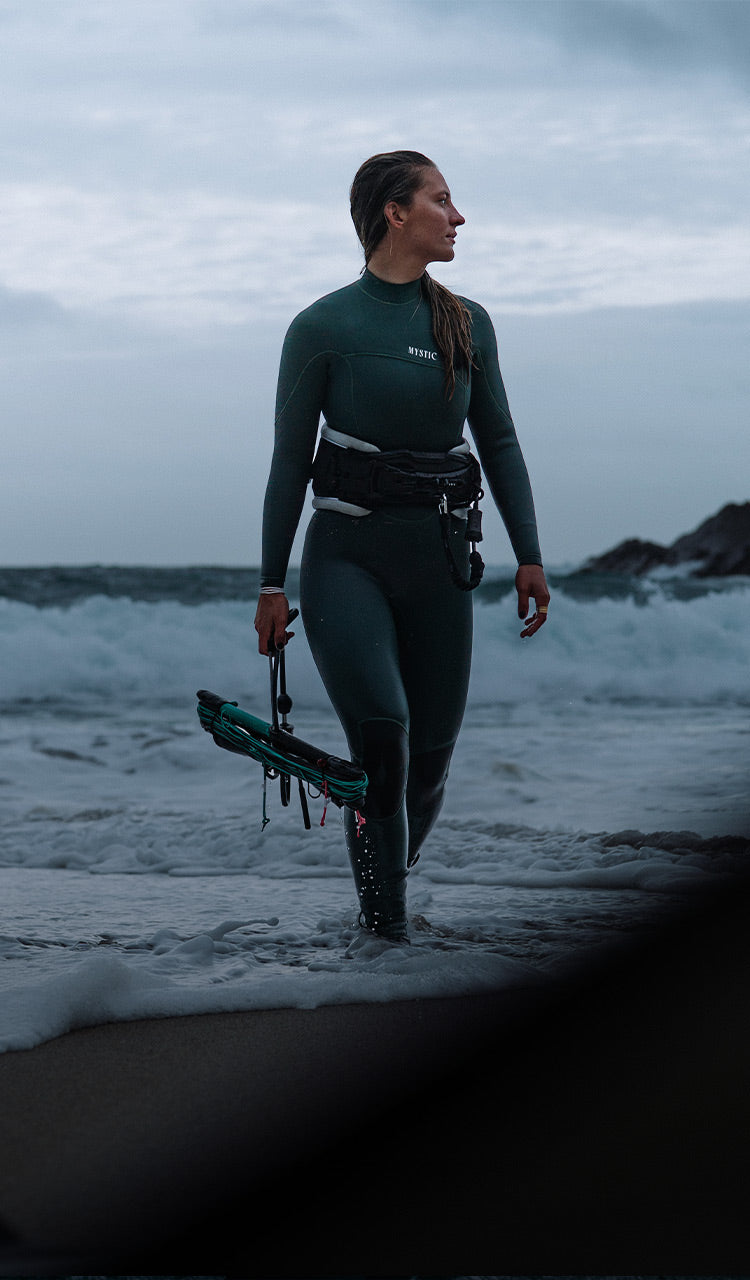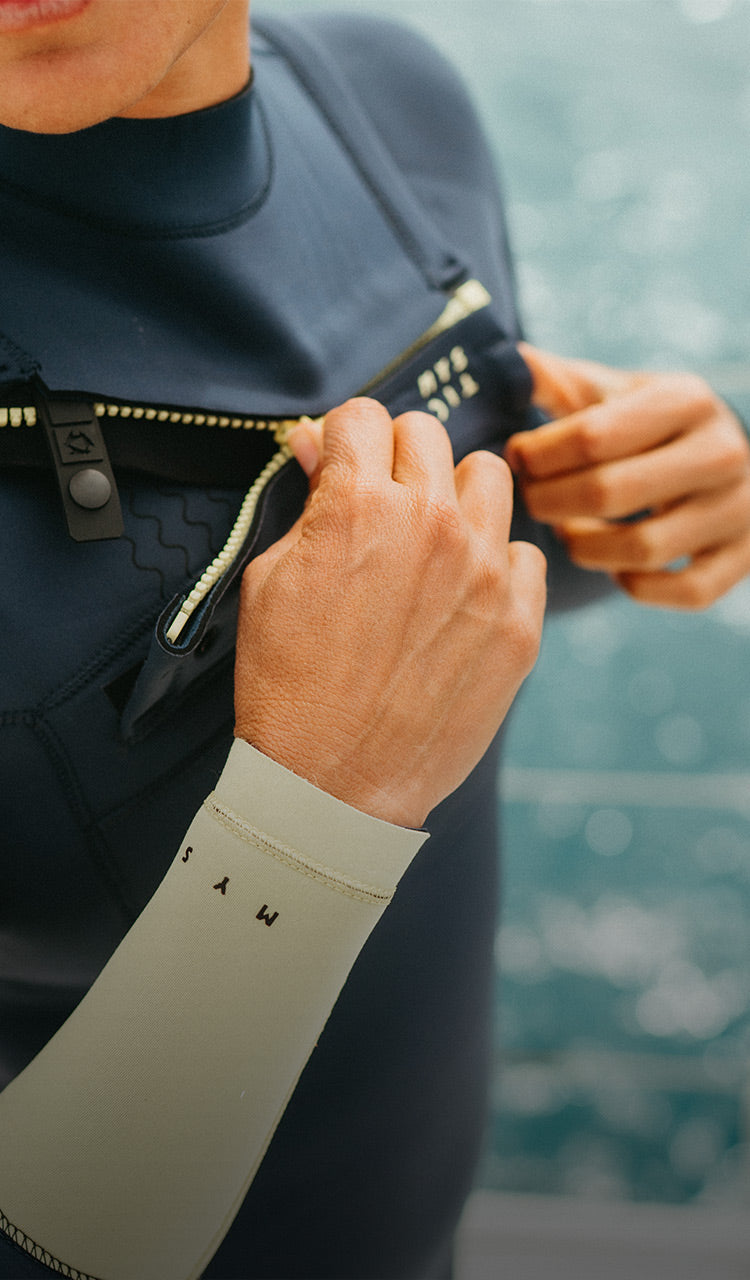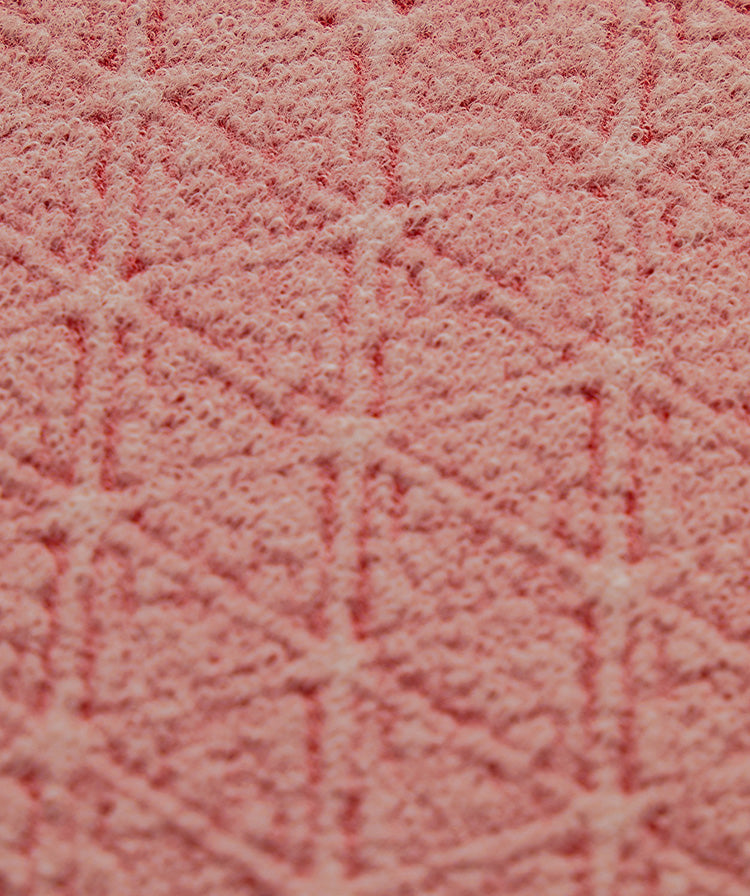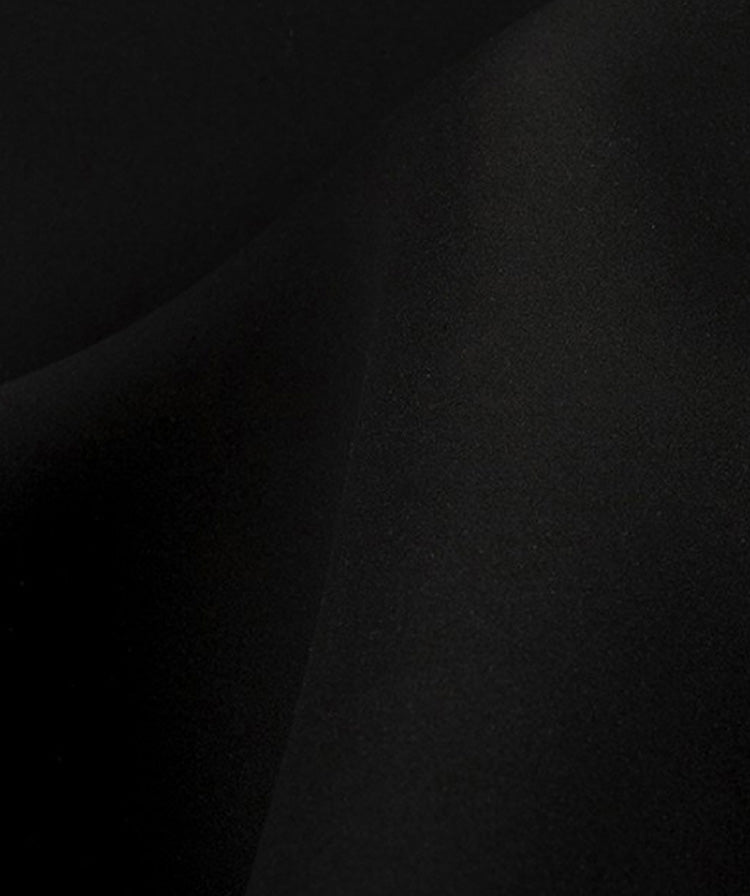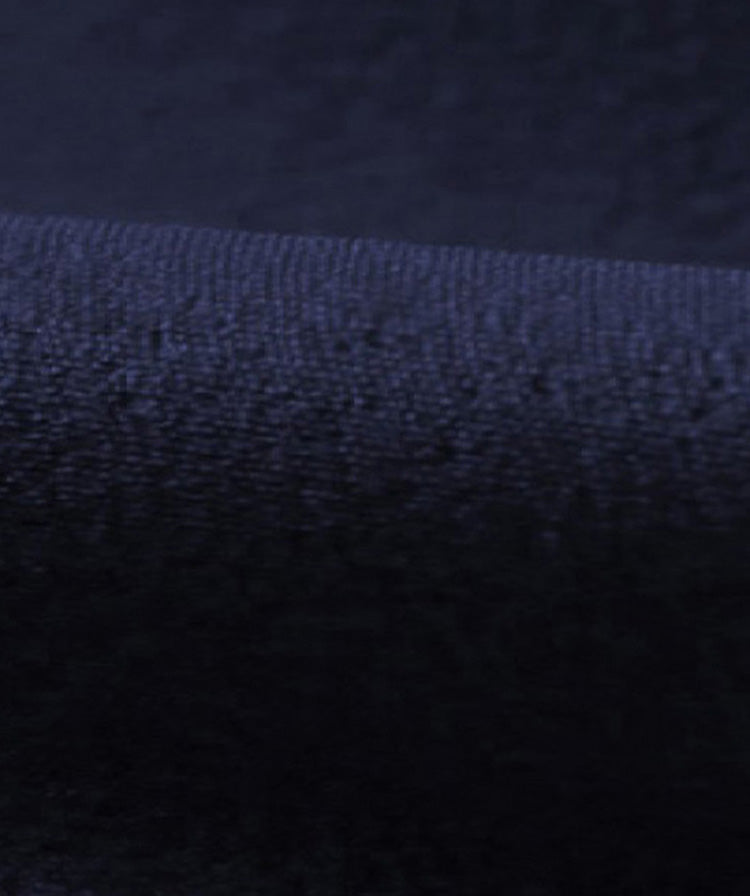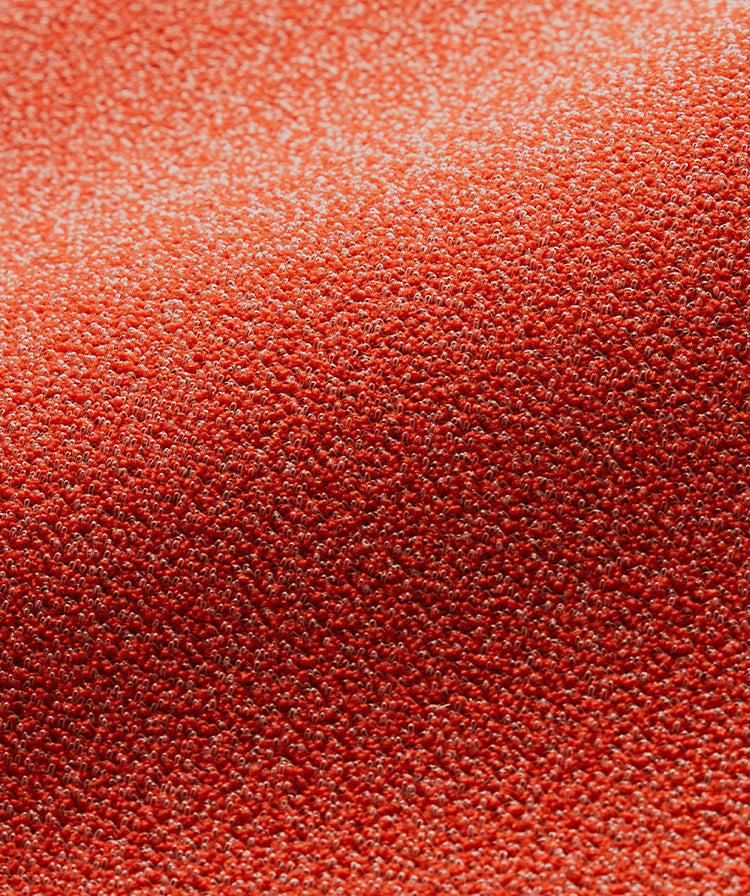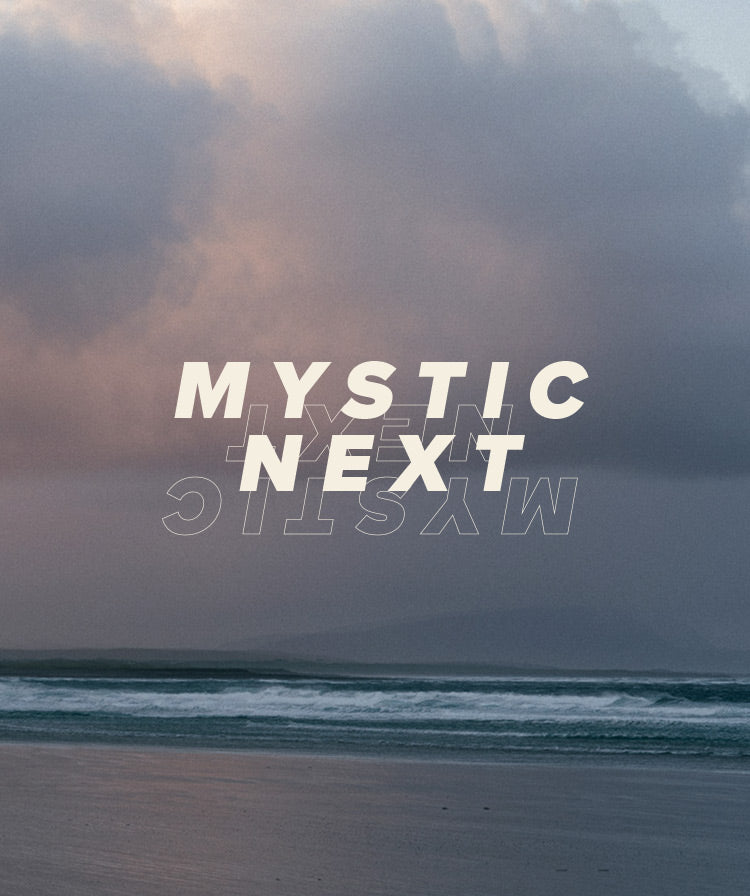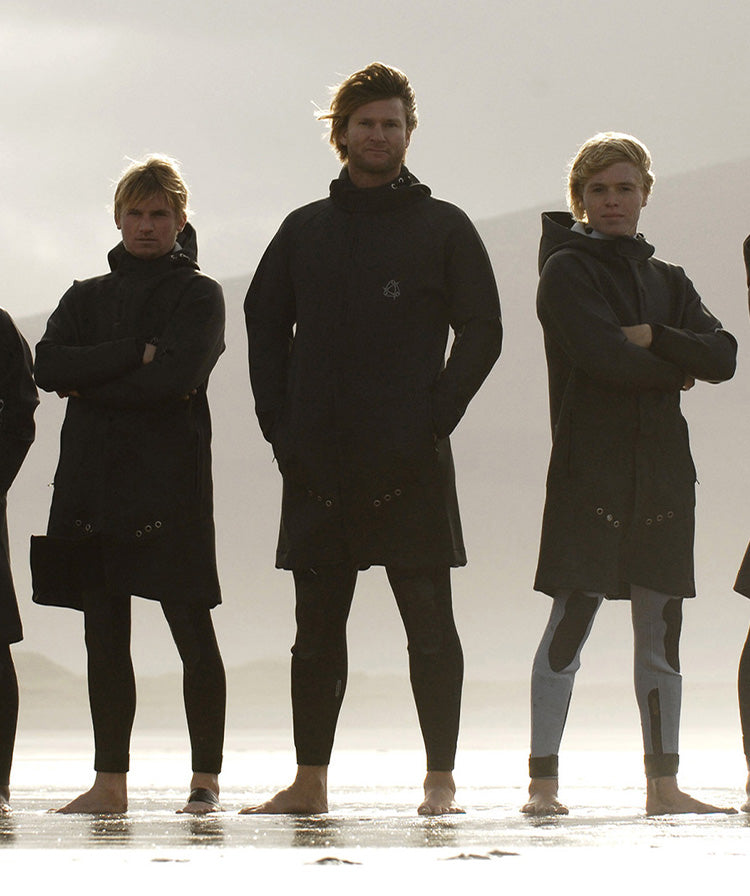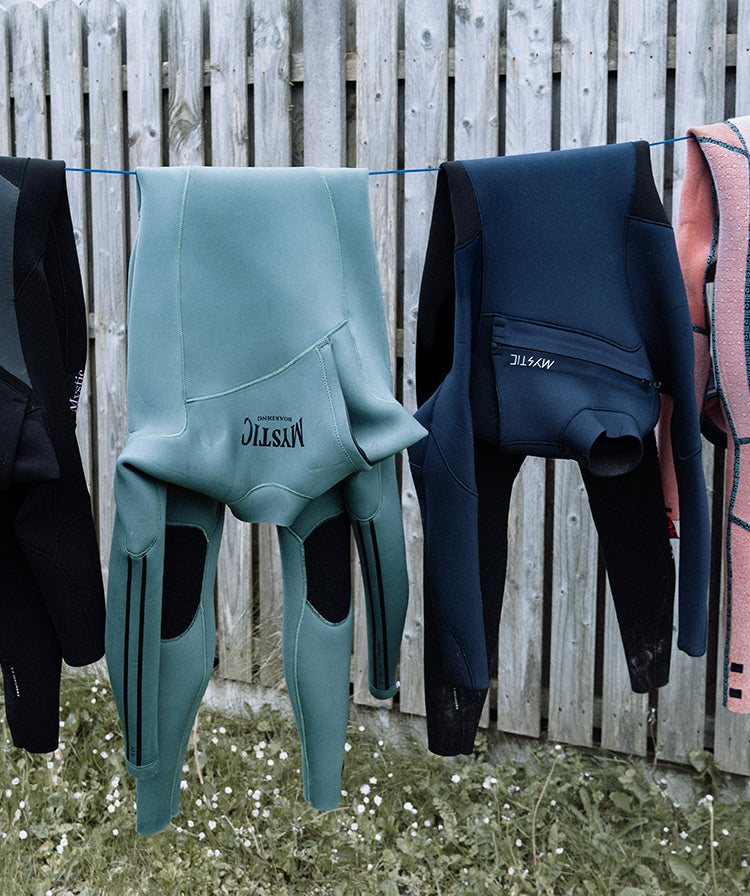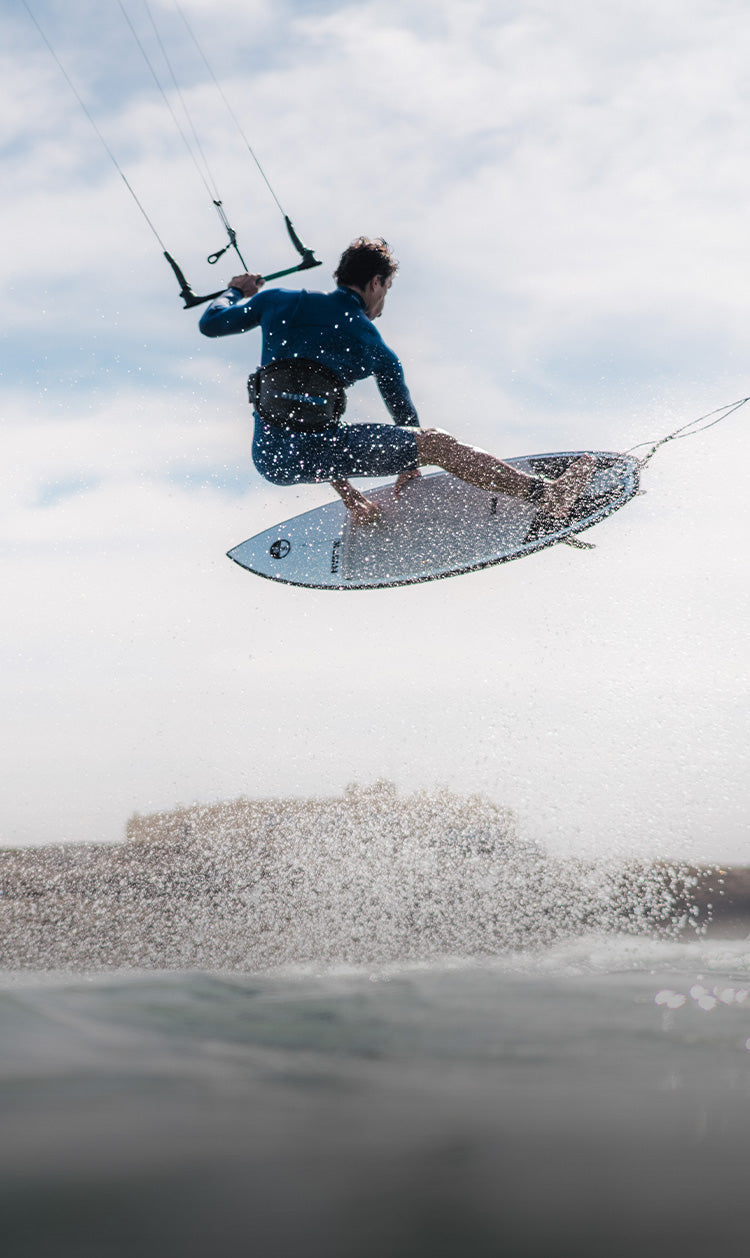
MYSTIC
Wetsuits
Can’t wait to get out on the water? No matter the season, there’s always a Mystic wetsuit that will help you surf the coldest conditions or perform well in the warmest of waters.
Fullsuits, springsuits & shorties
Wetsuits come in all kinds of different shapes and sizes, made solely to keep you surfing for as long as possible.
Fullsuits
Fullsuits will cover your entire body, except for your hands, feet and your head or neck. Fullsuits offer full protection from the sun's UV-radiation, which is very nice when you’re out there for hours. Don’t forget to put eco-friendly sun block on all parts exposed. Fullsuits mostly come in handy most time of year, but you really reap the benefits during Spring, Fall and Winter. Of course, you can also wear a fullsuit during Summer, but you’d might want to switch to a springsuit, shorty or even boardshorts. Fullsuits can be found in all kinds of neoprene thicknesses, but you’ll generally find them in 5/3mm, 4/3mm and 3/2mm.
Springsuits
Springsuits are a version of fullsuit with thinner neoprene panels. This still gives you the same protection against the sun, but allows for more freedom of movement because thinner panels are more stretchy. Let’s be honest, you don’t need the same wetsuit thickness in Spring, Summer and early Autumn. Springsuits usually come in 3/2mm, 2/2mm or a similar thickness of rubber. You can wear a springsuit between 13 to 18 degrees Celsius, but it all depends on you.
Shorties
Shorties on the other hand have exposed arms, legs or a partial combination of both. When waters get warmer than 18 degrees Celsius, it might be a good idea to switch over to a shorty. And why shouldn’t you? The feeling of freedom while surfing with hardly wearing any neoprene is uncanny. Still, staying out in the sun for too long can be dangerous. A shorty still offers some protection against those harmful ultraviolet radiations.
Neoprene tops, vests, lycra’s and rash guards
Tops generally are just shirts made from thinner panels of neoprene or lycra. You can have these with long sleeves, short sleeves or sleeveless. Most of the time, tops only are 1mm or 2mm. They offer protection against the sun and prevent rash from rubbing your torso on the deck and wax of your board. They’re great for surfing in the tropics or other warmer waters. They’ll give you great freedom of movement with maximum protection from the sun. Pair them with some nice boardshorts and you’re good to go.
Wetsuits
Men's Wetsuits
Mystic offers many different wetsuit models for men. Wetsuits with a back-zip or chest-zip, fullsuits or shorties. Men generally don’t wear anything underneath their wetsuit, but sometimes, tight swimming shorts can be worn for comfort. A pro tip: never wear your boardshorts over your wetsuit.
Within our Men’s Collection there are several options you can pick from. Each option has their perks, but a nice entry level is our Majestic Series. Majestic is one of our team rider's favorites. The Majestic wetsuit series offer maximum comfort and freedom of movement. Stay loyal to your royal! Stick to your Majestic.
Mystic’s Women’s collection offers a bunch of different options to support your needs and levels. Whether you’re just starting out or charging like a pro. Want to feel more comfortable in your wetsuit? Consider wearing a surfing bikini underneath your wetsuit.
Women's Wetsuits
Mystic’s Women’s collection offers a bunch of different options to support your needs and levels. Whether you’re just starting out or charging like a pro. Want to feel more comfortable in your wetsuit? Consider wearing a surfing bikini underneath your wetsuit.
Check out the Jayde Series. These wetsuits for women have sickest graphics backed by the newest technologies. A great combo of performance and style. On the inside, the Jayde has fully waterproof stretch taped seams combined with Flaremesh+ on the back, chest panels and lower body to ensure maximum comfort and warmth.
What wetsuit do I need?
Size
The best wetsuit is the one that fits your body type best. You can use our sizing chart to check what your size is. The most important thing is that you put on a wetsuit to feel how it fits you. This sometimes takes a couple of tries and models. It is normal that a new and dry wetsuit feels a bit uncomfortable at first, but once it gets wet it’ll get more flexible and comfortable.
Neoprene thickness
The thickness of a wetsuit is measured in millimetres and is expressed in consecutive numbers divided by a slash. Thicker panels give you more warmth, but generally have less flexibility and less freedom of movement.
The first number always indicates the biggest neoprene panel, the back and torso. The second number always represents the arms and legs, but if there’s a third number the second number dictates the thickness of the leg panels while the third let’s you know how thick the arm panels are.
A 5/3mm wetsuit means 5mm neoprene on the torso and back with 3mm panels at the arms and legs. A 6/5/4 means 6mm torso and back, 5mm legs and 4mm arms. You usually only see this with thick winter fullsuits. Having a separate thinner thickness for the arm panels allows for a bit more freedom of movement.
- <2mm: 20+ degrees Celsius
- 3/2mm: 13-15+ degrees Celsius
- 4/3mm: 11-15 degrees Celsius; boots, gloves and hood optional
- 5/3mm: 12-8 degrees Celsius; boots, gloves and hood recommended
- >5/4mm: <8 degrees Celsius; boots, gloves and hood highly recommended
Wetsuits for all budgets
Don’t worry Mystic has wetsuits for all budgets. We've got cheaper wetsuits for kids and for surfers new to the game. If you’re a little more advanced or performance orientated, we’ve also got you covered.
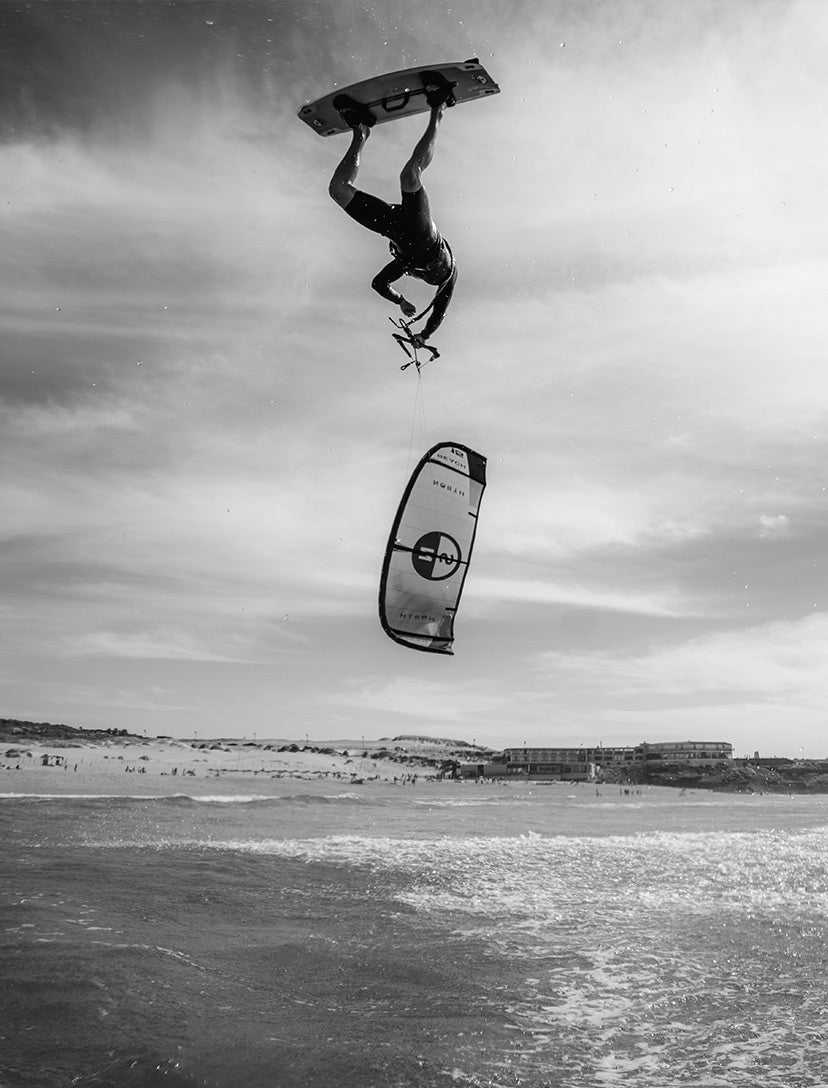
Neoprene craftsmanship
Ever since wetsuits were first developed by American physicist Hugh Bradner for scuba diving marines in the 1950s, a lot of technological advances have been made to improve neoprene and wetsuits in general.
Performance
In Mystic’s wetsuits we only use the best rubber and seams to ensure a combination of everything you want: comfort, warmth, stretch and performance.
How well you perform in a wetsuit depends on a bunch of different factors. The most important being paneling lay-out, neoprene thickness and fit. In general, more neoprene panels in a wetsuit equal a better fit, while larger panels give you a bit more stretch and freedom of movement.
The thickness of a wetsuit also determines how much stretch there is. Thinner neoprene means means more freedom of movement, but it also means that panels are a bit more fragile and less warm. Performance or competition wetsuits, sometimes mentioned as COMP, are not as warm as other suits and will probably last shorter than a regular wetsuit.
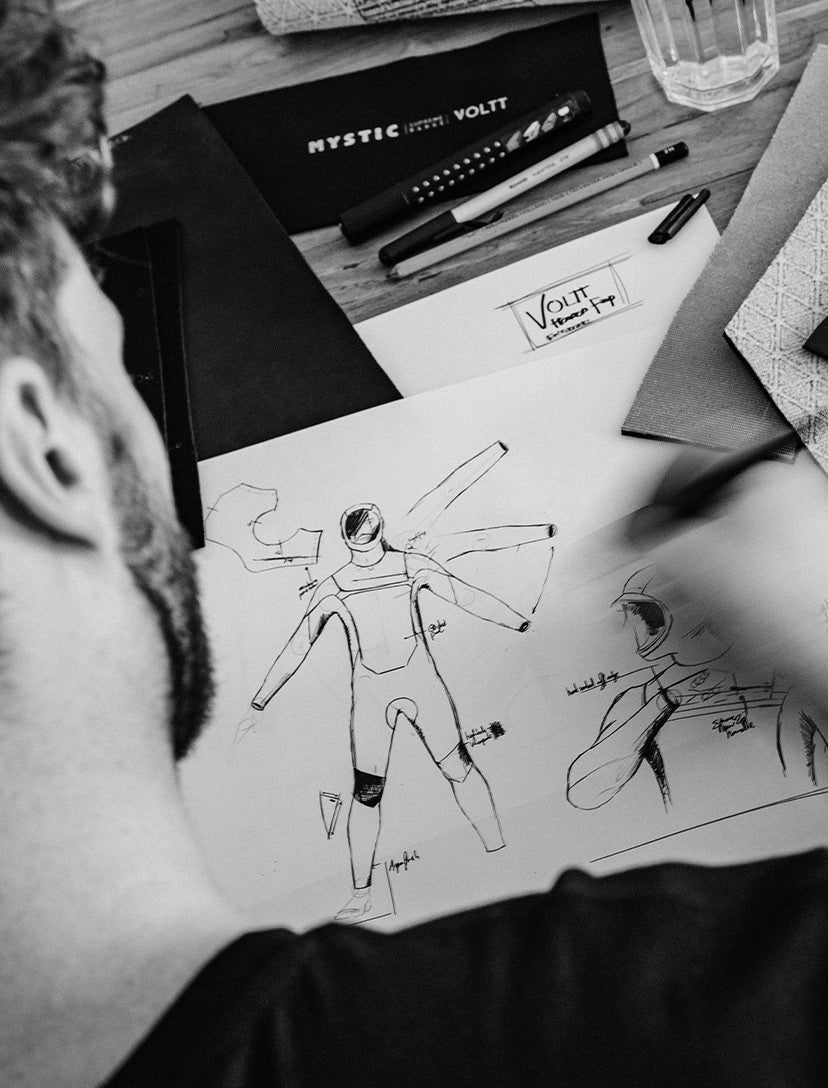
Materials
We work with the best manufacturers and research & development teams in the world to offer you a wetsuit that keeps you safe and warm while being built to last. Mystic’s very own research, development and design team works around the clock to find the latest improvements in materials and technologies.
Besides keeping up with the latest materials, we focus on features that really add value to a wetsuit. From fine zippers to aqua flush systems, allowing you to ride and glide with more pleasure and ease. We strive to incorporate these advancements after thorough testing. Our team consists of surfers from all disciplines ensuring you of a product that doesn’t fail you or lets you down.
Neoprene accessories
Accessories made from neoprene rubber can be divided in three different categories: gloves, hoods, and boots. These neoprene accessories will be necessary when you’re a cold water surfer.
Gloves, mittens and lobsters
Neoprene gloves come in a variety of thickness and variations. It all depends on the water temperature and your level of comfort. There are 5 finger gloves, full mittens and lobster gloves. Each have their own characteristics.
Five-finger gloves offer a bit more mobility and grip. Because your fingers are separate it’s a little easier to lose heat and get cold fingers. Of course, getting thicker gloves solves this problem, but you will lose some mobility. Five-finger gloves are great for wind and kitesurfing.
Neoprene mittens offer the full experience of warmth. Four of your fingers will be in one mitten while your thumb will be by itself. This still gives you some grip and freedom of movement, but far less than a five-finger glove.
The middleman is the lobster glove. Three of your fingers will be in a mitten, while your thumb and pointer finger each have their own little pocket. This gives you grip and mobility while ensuring warmth.
Picking the lobster glove might seem like a no-brainer, but there are situations when five-finger gloves or mittens might be the best choice. It’s up to you to decide which one to want. It’s a game of give and take.
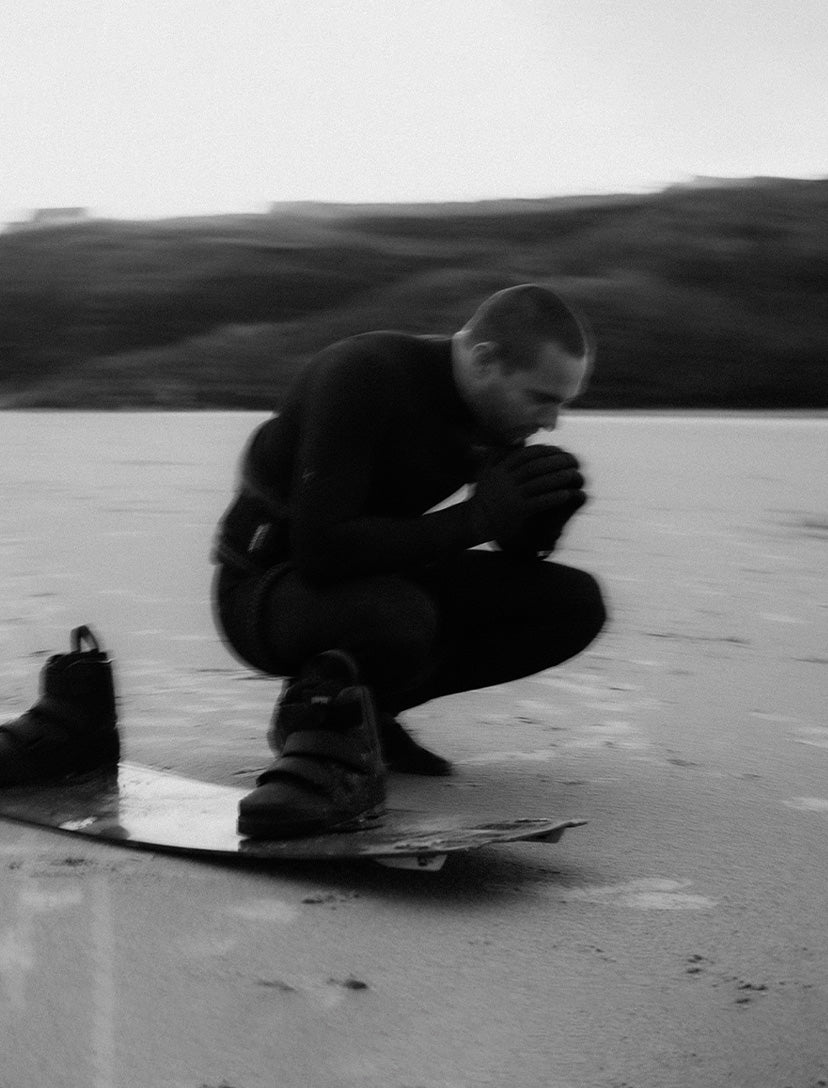
Boots
Booties or neoprene shoes and socks come in all shapes, sizes and thicknesses. When surfing reefs, boots or neoprene socks can be nice to prevent you from cutting your toes and feet on rocks, coral, urchins, shells or other sharp stuff. You don’t want reef cuts, trust us. It takes forever for rash and cuts in the tropics to heal, just wear a damn neoprene sock!
Split-toe boots are neoprene shoes with a split between your big toe and the rest of your toes. Split-toe booties give you a bit more grip on your deck, which can be nice when you want some more control and keep your airtime up in wintertime. You might lose a bit more warmth and it can be a bit uncomfortable at first, but some surfers think this is the holy grail.
Round toe boots are like a mitten. They keep your piggies warm by having them all together snuggly. You do lose a bit more grip, but who cares, as long as you’re strapped in it shouldn’t make too much of a difference. Warm toes all the way!
Hoods and beanies
Sometimes just a cap, sometimes a hooded wetsuit or full hooded vest. There are many options to choose from to your head and neck protected from the wind and cold water.
And that’s not all, harsh conditions are terrible for your ears. Wearing a hood, when it’s windy or cold, will also protect you from surfer’s ear and the consequences. By that we mean not surfing for 6+ weeks when the bone in your ear canal needs to be drilled out.
Putting on your wetsuit
When putting on your wetsuit do it bit by bit. Depending on the neoprene thickness and type of wetsuit a different approach might suit more, but don’t go yanking on the panels. If you’re really having trouble getting your arms and legs through, consider covering your limbs with a plastic bag before inserting them into your wetsuit.
Be extra careful when you have a wetsuit with single-lined rubber panels in the chest, back or arms. These parts are more fragile and will tear faster than panels that also have a lining on the outer part.
Once your feet are through, pull up your wetsuit firmly but carefully. First up to your ankles, then your knees. Position the pads accordingly and move up to your crotch and groin. Over the bum, slowly all the way up to your armpits. One arm in, followed by the other. Use the same plastic bag method if you’re not getting through. Finally, close the wetsuit up accordingly. Ask for help if you have a back-zip that you can’t reach.
Taking a wetsuit off is exactly the same, but backwards. Don’t go yanking on it like you’re in the 4thround of Squid Game. This is not tug of war.
Taking care of neoprene accessories
All of these principles also apply to boots, gloves and hoods. You don’t necessarily have to turn them inside out, since that’s quite the hassle. Just make sure they’re dried upside down before you store them. Otherwise, the smell will be worse than the forgotten lunch in your gym bag that has been there over the entire summer. Yuck.
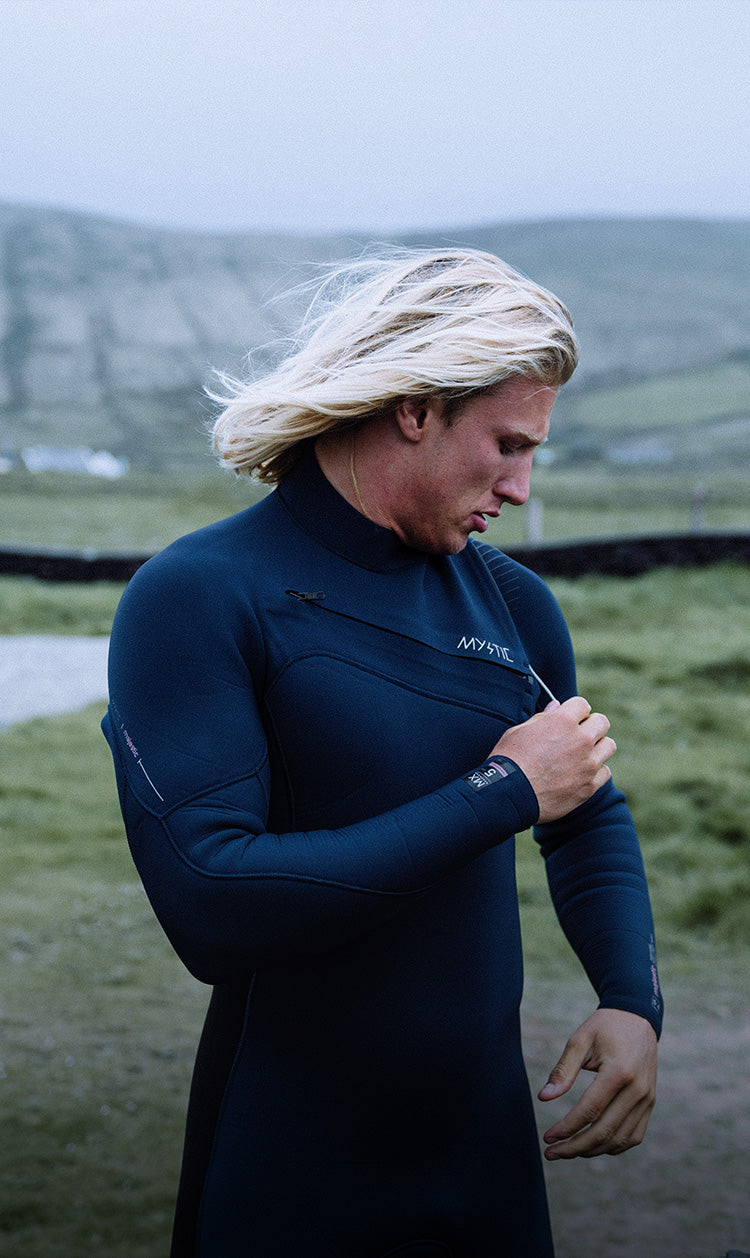
FRONT-ZIP WETSUIT
In this video we explain how to put on a front-zip wetsuit and show you some tips and tricks.
